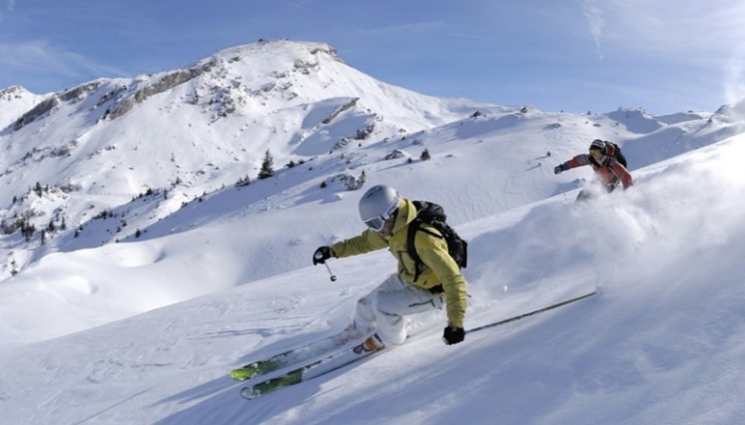
Introduction
The winter skiing and snowboarding season may be starting to come to an end however we are continuing to see a number of injuries related to being on the slopes. Injuries are part of all sport and skiing is no different. Despite the fact that injuries are not always preventable there are ways we can reduce the likelihood. Today we are going to look at the 3 most common skiing injuries that we see in clinic and ways to reduce the likelihood of these occurring.
1) Skiers Thumb

This occurs in skiing when a person lands on an outstretched hand while holding a ski pole, which causes forced abduction of the thumb with extension. This results in a tear to the Ulnar Collateral ligament.
Tip! When holding your ski poles – slide your hand through the bottom of the strap and grip on to the pole. Gripping like this instead of through the top means that when you fall and release your grip your thumb will not become caught between the pole and the strap.
2)Knee Ligament Injuries

Knee injuries are the most common skiing injury accounting for 45% of all injuries. In particular the knee stabilisers (ligaments) are a particularly common injury. This is due to the knee often being in a valgus position (pointed inward) during skiing coupled with abrupt changes in direction or awkward landings. This causes the knee to get caught within the ski’s or else in the snow.
TIP! [How to Set the DIN on Ski Bindings | LIVESTRONG.COM] One important factor to consider is your bindings setting on your ski’s and ensuring that these are not too tight. Your ski’s are designed to fall off when falling to prevent them getting caught during the fall. We advise to get your DIN setting set by a professional. This is based on your weight, height and skiing experience and this controls the release of your boot during a crash.
3)Upper Limb Injuries
FOOSH (Falling on outstretched hand) injuries or falling directly on to your shoulder accounts for many types of skiing injuries. This involves fractures to the hand, wrist and arm as well as ligamentous injuries and shoulder dislocations.
Tip! Improving falling mechanisms can reduce risk of significant upper limb injuries. If you feel yourself falling try fall in to the mountain and avoid if possible falling down the hill. Falling down the hill will put you at higher speeds and increase force going through your body on impact with the ground. Lastly, when falling try tuck and rotate your body so that you are landing on a large surface area as opposed to on one area or joint.
Other useful tips

- Improve trunk and lower body strength and stability.
- Warm up
- Always wear a helmet
- Take adequate rest when you’re tired
- Understand and abide by ski resort rules
- If inexperienced get lessons and only go down slopes that you feel comfortable
- Relax and enjoy it!
